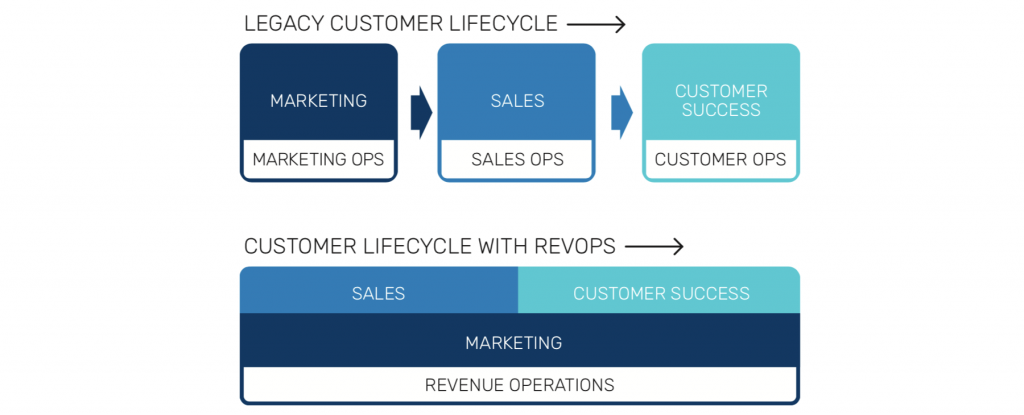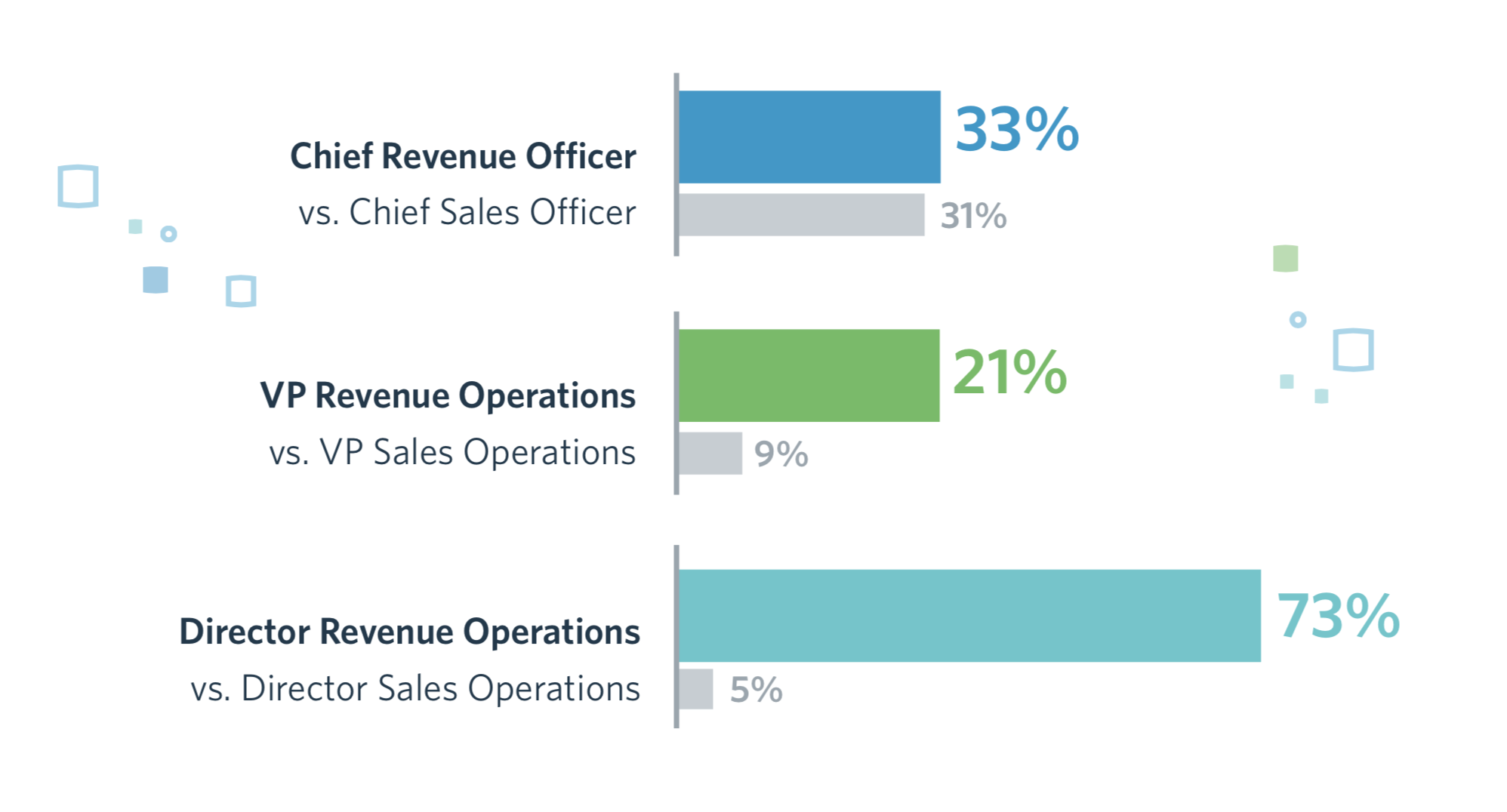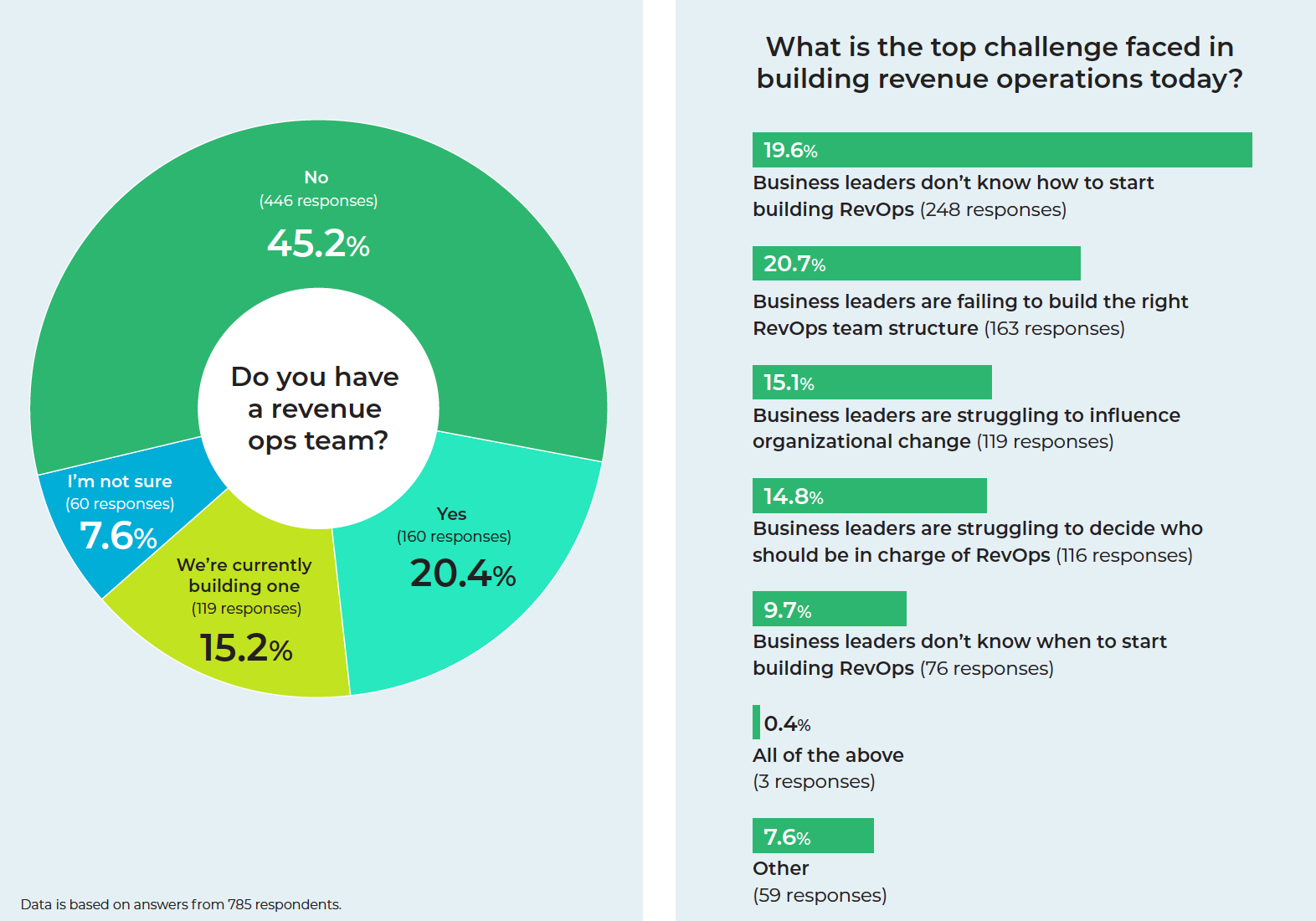Revenue is the lifeblood of any company.
It is the connective tissue that glues businesses together. After all, a company is only successful if it is generating revenue that exceeds its expenses.
For decades, the primary stewards of this revenue growth were marketers and sales professionals. Marketers grew awareness for the business and generated leads that sales would use to close new deals. Those are the positions that likely would first come to mind.
But behind your marketers and sales professionals in modern organizations is a team of people that make their work possible. They collect and analyze data from across the customer journey. They manage the internal tech the company uses to execute their strategies. They build out processes. These teams are commonly known as marketing ops and sales ops teams.
Ops were, until recently, underutilized and underappreciated in many organizations. They often do the heavy lifting. Strong operational resources are a necessity for companies that want to grow reliably.
A Data-Driven World
With the amount of data that organizations collect growing exponentially comes added capabilities and complexity. Collecting more data enables companies to put themselves in a position to optimize processes and deliver more effective marketing and sales initiatives, growing revenue while providing a better experience to consumers.
But the fact is that marketing ops and sales ops teams were designed to serve their departments. Overall revenue is an adjacent focus of those teams. Marketing ops teams work to improve their marketing — that is, to grow awareness for the brand and the number of leads the team generates.
The success of sales operations teams are more tightly connected to revenue, but their concerns are still broader than straightforward revenue generation. Their goal is to serve and improve sales initiatives.
In a data-backed world, this has left organizations with a large skill gap. Even in companies where marketing and sales alignment is a prime concern, the ops teams still lack the singular focus on revenue that they need to tie these teams together toward a common goal.
Customers are won and lost through their experience with a brand. That extends across channels — web, in-person, email, social media, radio, television, and phone.
It also extends across your departments. Customers want a consistent and valuable experience whether they are engaging with your marketing messages, sales reps, customer support, or customer success teams. According to a study from Adobe, “optimizing the customer experience” is the primary concern for marketing, creative, and technology professionals.

Source: Adobe
Marketing and sales ops teams undoubtedly see the value in this consistency and alignment across an organization. But their focus will always be on the department that they serve and not on the larger strategic decisions that connect departments and shape their ability to generate revenue.
Organizations have quickly found that they need additional support in this area. They need a team that is laser-focused on creating alignment, harnessing data, and crating processes that facilitate efficiency.
Enter, revenue operations.
What is Revenue Operations?
Revenue operations (RevOps) delivers a focus on aligning sales, marketing, and customer success across the entire customer journey. Rev ops professionals attempt to break the traditionally siloed marketing, sales, and customer success data and strategies to create a more consistent approach across an organization.
Their focus is often on collecting, sharing, and utilizing data effectively to harness actionable insights and make effective data-backed decisions.
A rev ops department will determine what metrics matter most to the company’s revenue generation efforts and act to the mutual benefit of marketing operations and sales operations teams, who may otherwise think the other is operating in their own self-interest.
The general goals of your average rev ops team typically include:
- Create alignment. Align marketing, sales, support, and success teams around common goals.
- Facilitate focus. Bring teams together around common success metrics so they are working toward the same end goals. The metrics often include sales cycle time, win rates, pipeline velocity, forecast accuracy, customer acquisition costs, customer lifetime value, and churn.
- Simplify. Data makes our systems complicated enough as is. Revenue ops teams often strive to simplify business processes and strategies to make them easier to manage and execute. This also improves alignment between departments and makes for easier collaboration.
Revenue operations teams seek to take a siloed customer experience and improve consistency in messaging and experience throughout the customer journey.

Source: People.ai
Rev ops is still an emerging field. What it means to one company may differ from another. But generally, revenue operations teams are focused on aligning people, data, and processes to improve revenue within organizations.
The Growth of Revenue Operations
With data opening new doors for companies, it comes as no surprise that revenue operations positions have seen a drastic uptick in recent years.
On LinkedIn, roles including the word “Revenue” in them, including Director Revenue Operations, VP Revenue Operations, and Chief Revenue Officer have seen rapid growth on the platform.
According to a Sirius Decisions study that evaluated new job listings on LinkedIn from October-December 2018, rev ops positions are outpacing their sales-equivalent counterparts on the professional social network. “Direct of Revenue Operations” positions outpaced “Director of Sales” positions by more than 68%!

Source: Clari
This is due, in part, to the fact that revenue operations positions are the relative “new kid on the block.” Many companies are hiring revenue operations professionals for the first time. Naturally, this means that there will be more open positions.
So while this research doesn’t necessarily show that revenue operations positions will be that much more popular than their sales counterparts moving forward, it does show a significant trend toward embracing these roles across industries.
The trend is driven by necessity, but it’s also driven by results. Companies that are embracing rev ops fully are enjoying the benefits:
- Public companies with revenue ops saw a 71% higher stock performance.
- Companies with aligned revenue engines grow 19% faster and are 15% more profitable.
- Misalignment between sales and marketing processes costs B2B companies 10%+ of revenue per year.
- Aligned companies see 36% higher customer retention and 38% higher sales win rates.
Of course, that isn’t to say that there aren’t challenges when it comes to adopting revenue operations. It’s a new frontier for many companies and as a result, there are bumps along the way.
According to Clari, 45% of companies do not have a revenue ops team. Only 35% of companies currently have one or are currently building one. In the survey they conducted, the top challenge facing rev ops teams today was that companies often lack experience in building rev ops teams and as a result are having trouble building teams effectively.

As time goes on and rev ops teams become a more integral focus for companies around the world, you can be sure that these challenges will shift.
Revenue Ops and Data
Data is at the heart of any successful revenue operations strategy. Their ability to break down silos, improve customer experiences across their journey, and create alignment between marketing, sales, and success teams relies on their ability to collect, harness, and effectively utilize data.
In this regard, Insycle is the proverbial Swiss army knife of rev ops professionals. Insycle connects directly to popular CRM platforms like HubSpot, Salesforce, and Intercom, helping revenue operations teams to effectively cleanse, standardize, update, aggregate, and consolidate their data to create a more unified approach across departments.
Insycle provides revenue ops teams with the tools that they need to tackle their most important data-related tasks and put their marketing and sales departments in a position for success. With a bird’s-eye-view of your data, revenue operations teams will be able to take better stock of their data quality and fix the most worrisome issues in their customer databases.
Insycle’s deep data cleansing features allow you to identify and remedy common customer data issues like duplicate contact records, inconsistent formatting, standardization and case issues, and remedy common data importing problems.
To try Insycle, fill out the form below to sign up for our 7-day trial.
-3.png)





